In 2018, zoologists witnessed a humorous scene while observing the sloth in the wild. The sloth discovered a sleeping sloth hanging from a tree while searching for food. Within seconds, the sloth managed to climb the tree and bit the sloth’s hind leg. As a result, the sloth continued to sleep without even glancing back.
As the slowest animal in the world, the sloth can be said to exhibit extreme “laziness.” Even when faced with danger, it struggles to “run” at a pace of only about 10 meters per minute.
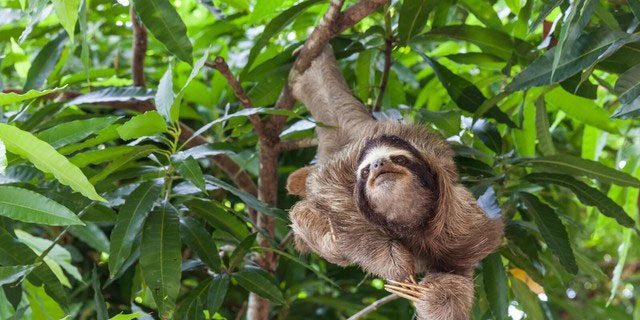
In addition to moving very slowly, sloths are even indifferent to eating. They consume leaves available on trees and do not even bother to chew the leaves when putting them in their mouths. Their saliva “digests” the leaves until they are nearly complete before swallowing.
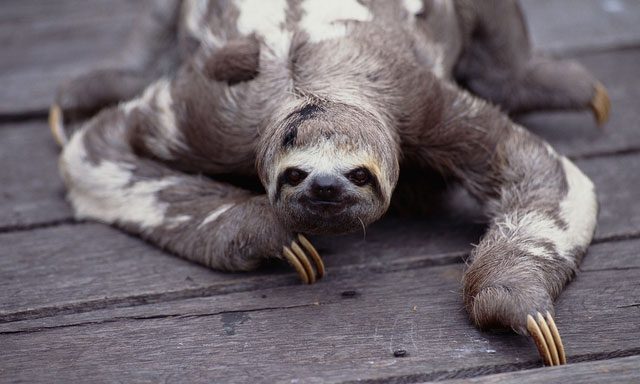
Sloths have the lowest metabolic rate among non-hibernating mammals. This helps them conserve energy, requiring only a small amount of food each day and sleeping up to 20 hours. As a result, they can survive in food-scarce environments.
This raises the question: as a slow-moving herbivore, how does the sloth manage to survive to this day?
In nature, some species have migratory habits, while others have extensive ranges. Migration is very dangerous, especially for herbivores, as they live in concentrated groups and are easily detected and hunted by predators from a distance. Consequently, migration leads to a significant increase in mortality rates among animals. For example, at least 10-20% of swallows die during their annual migration, but sloths are different. They are only found in South America and never leave the rainforest in their lifetime, avoiding the hazards of migration.
Secondly, if an animal has a large range, the risk of being detected is higher. However, sloths live only on a few nearby trees throughout their lives. Therefore, the peaceful habitat of sloths is their “magical weapon” that helps them survive to this day.
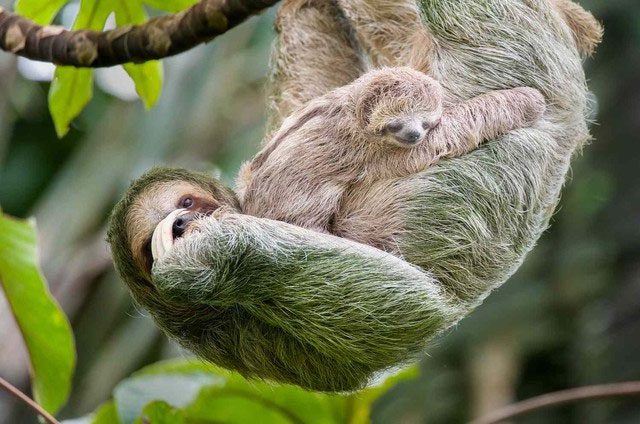
The stomach of a sloth has a special structure with four compartments, aiding in effective digestion and maximizing nutrient absorption. Their digestion process also occurs slowly, helping to conserve energy.
Essentially, sloths spend their entire lives in trees, rarely leaving except to relieve themselves every few weeks. The trees they inhabit are not ordinary; they are large, over ten meters tall, and are often found near the treetops. This survival habit helps them avoid most ground predators.
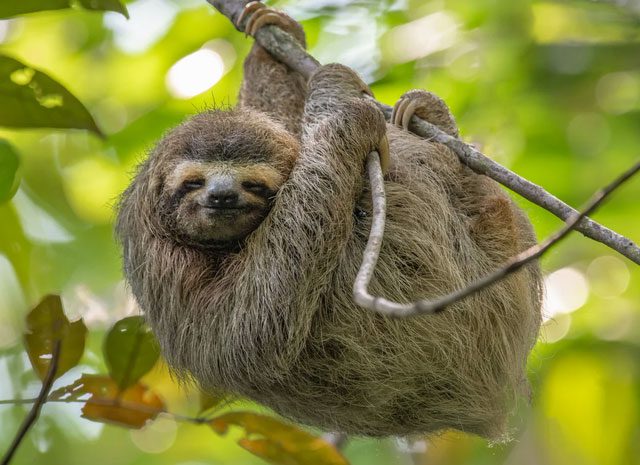
Sloths have greenish fur that helps them blend into the canopy, making them harder to detect by predators.
As herbivores, particularly solitary ones, sloths have developed ways to camouflage themselves for better survival. Living in humid tropical rainforests, where it’s hot and they rarely move, some species of algae and moths can attach and thrive on their bodies.
Green algae cover the sloth’s body, aiding in camouflage. Additionally, their stillness allows them to blend perfectly with the bark and leaves in the trees, making it difficult for predators to spot them.
In fact, the relationship between algae and sloths is a symbiotic one, benefiting both parties. The green algae on the sloth make it harder for predators to locate them, while the remains of moths on the sloth provide essential nutrients for the algae to thrive.

Sloths have a relatively long reproductive cycle and only give birth to one offspring at a time. However, the young sloths are capable of becoming independent early and can forage with their mothers after a few weeks.
Sloths prefer to live high in trees, so if predators want to hunt them, they must either climb or fly. This deters many land predators. Climbing trees expends more energy than running, and slippery trunks can lead to accidental falls. Of course, jaguars and lions are experts at climbing trees, which is why they target sloths.
However, an adult sloth weighs only about 5 kg, and if you account for the thick fur and bones, the remaining meat amounts to only 1-2 kg. This “small piece of meat” is clearly not an ideal hunting target, so sloths are only pursued by lions and jaguars when they are seen and the predators are very hungry, rather than being their primary prey.
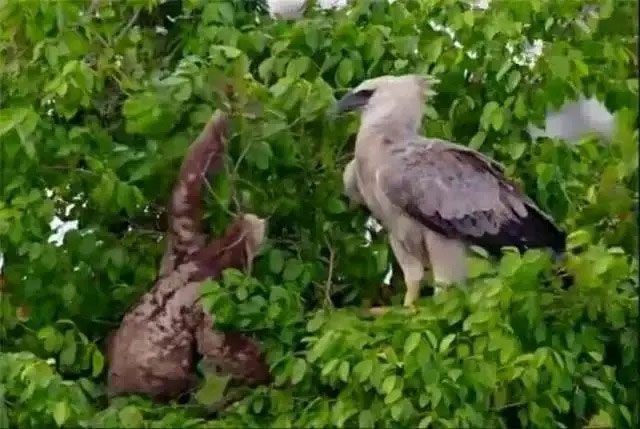
Sloths live in rainforest environments where few animals compete for food. Additionally, recent studies suggest that a low metabolic rate may be a crucial factor that helps species survive over long periods. Hence, slow-moving sloths may have an evolutionary advantage that allows them to adapt to their habitat and evade extinction.
Although sloths move slowly, they also possess a certain degree of defense with their long, sharp claws on their forelimbs that can reach up to 10 cm. When faced with natural enemies, they will swing their claws in a “slow-motion” manner to defend themselves. While this slow movement may be hard to notice, even a scratch from a claw can cause injury.
Despite being famous for their slowness and herbivorous nature, sloths actually have their own survival rules—not only relying on their high-canopy habitat but also on their camouflage ability and having less meat than other species, etc.
Therefore, without the destruction of tropical rainforests caused by humans, sloths today would still be among the least concerned species.


















































